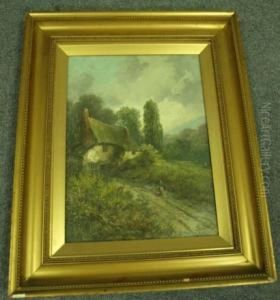Horatio Stone Paintings
Horatio Stone was an American sculptor born on December 20, 1808, in Chesterfield, New Hampshire. Not much is known about his early life, but it is evident that he developed a passion for the arts, particularly sculpture, at a young age. Stone pursued medical studies, which he later integrated with his artistic skills, becoming known for his anatomical accuracy in sculpture.
In the 1830s, Stone moved to Italy, a center for artists wishing to hone their craft in the classical tradition. While in Italy, he was greatly influenced by the prevalent Neoclassical style, which is reflected in his work. He spent significant time in Florence, which was a hub for American artists abroad, and became acquainted with well-known figures of the American expatriate community.
Returning to the United States in the early 1840s, Stone settled in Washington, D.C., where he established himself as a professional sculptor. His works from this period include busts of prominent American figures, such as a marble bust of John C. Calhoun in 1845, which was commissioned by the Senate for the Capitol's Senate reception room. Stone's ability to capture the likeness and character of his subjects brought him considerable acclaim.
Horatio Stone's contributions to American sculpture were recognized in his time, and he became a respected member of the artistic community. His works were exhibited at the National Academy of Design and other prestigious institutions. Beyond portraiture, he also created allegorical and mythological figures, which were popular in the Neoclassical tradition. One of his notable contributions is a statue of a young Abraham Lincoln, which he sculpted later in his career.
Stone's engagement with art went beyond his practice as a sculptor. He was an advocate for the arts and participated in discussions about art policy in the United States. His efforts contributed to the development of the American art scene during the mid-19th century.
Horatio Stone passed away on July 18, 1875, in Washington, D.C. While he may not be as widely remembered as some of his contemporaries, his work remains a testament to the skill and dedication of American artists in the Neoclassical era. His sculptures can still be found in various collections, serving as historical markers of the individuals and cultural milieu of his time.
